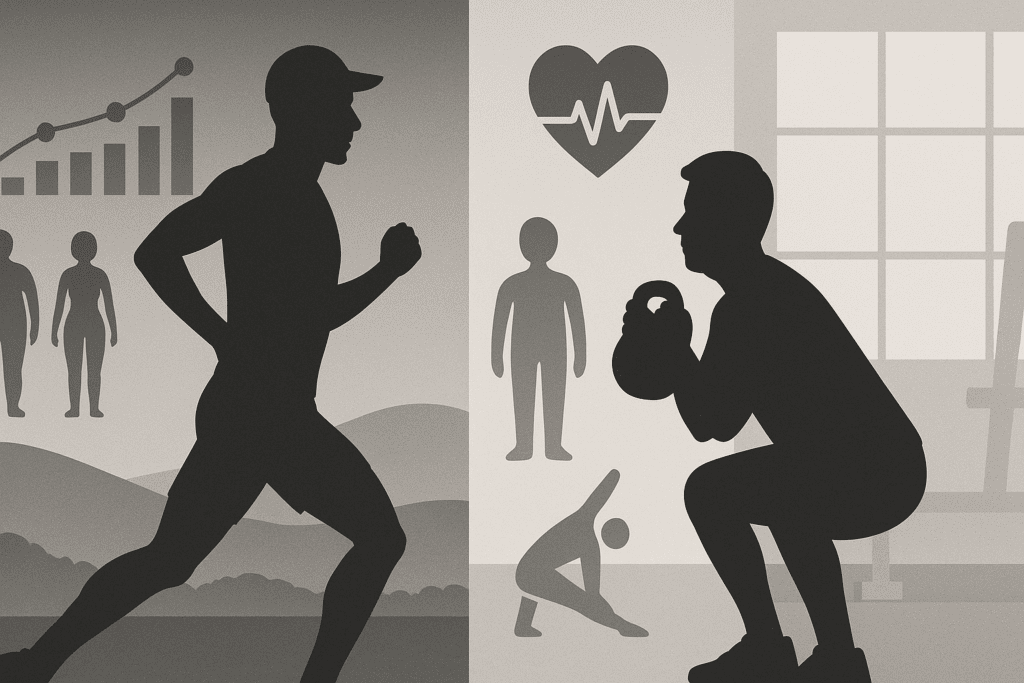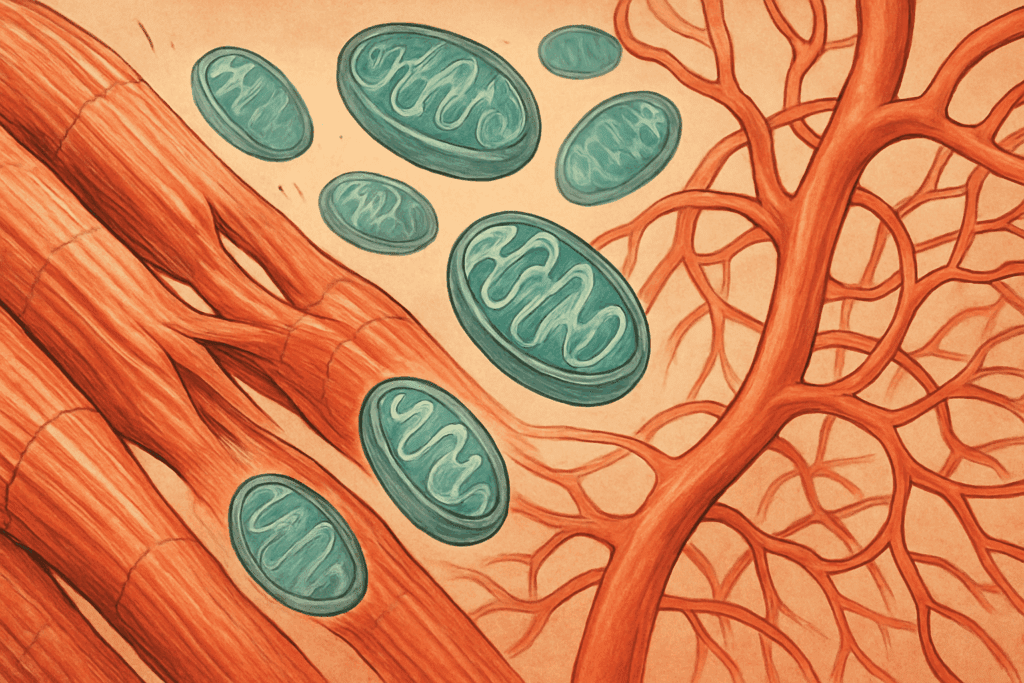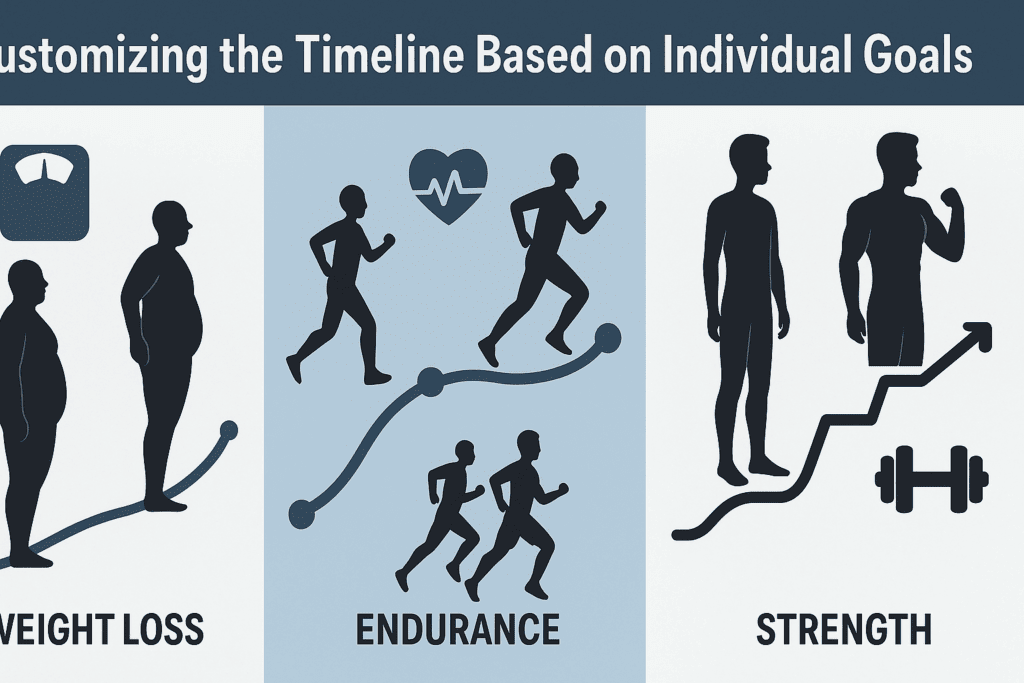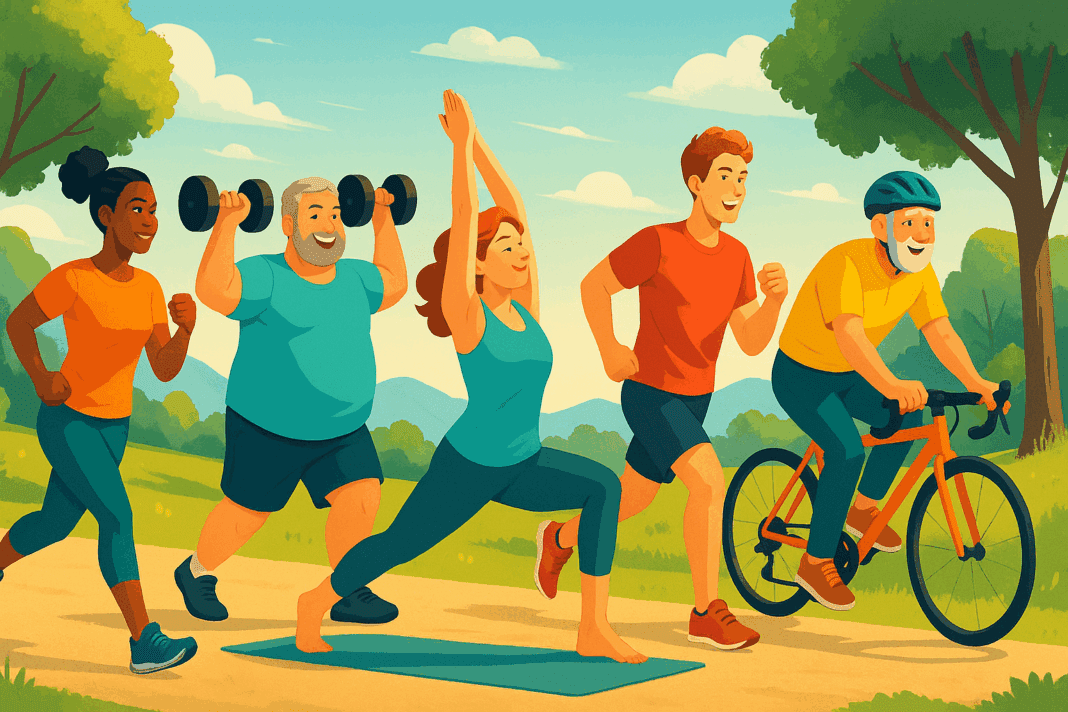Getting in shape is a goal that resonates with people from all walks of life, whether they’re elite athletes striving to fine-tune their performance or everyday individuals seeking improved health and vitality. While the desire to become fitter is nearly universal, a common question persists: how long does it take to get in shape? This seemingly simple inquiry opens the door to a complex and nuanced discussion grounded in exercise science, physiology, nutrition, and behavioral psychology. For those looking to transform their body and enhance their stamina, the answer is not a one-size-fits-all timeline. Instead, it depends on a multitude of interrelated factors—including starting fitness level, exercise routine, nutrition, sleep, stress levels, and overall lifestyle choices.
You may also like: Build Running Stamina Fast: Best Exercises to Increase Endurance and Boost Performance Naturally

Defining “Getting in Shape”: What It Really Means
Before we can explore how long it takes to get in shape, we must first define what “in shape” actually means. This term can vary significantly based on individual goals. For a long-distance runner, being in shape might mean improved endurance and cardiovascular efficiency. For someone recovering from a sedentary lifestyle, it could involve building basic functional strength, losing fat mass, or increasing daily energy levels. Scientific literature often defines physical fitness through measurable markers such as VO2 max, body composition, muscle strength, flexibility, and resting heart rate. Thus, how long it takes to get in shape is inherently tied to how one defines their end goal.
Understanding the Science of Physiological Adaptation
From a biological perspective, physical improvements occur as a result of consistent physiological adaptation to stress. When you exercise, your body experiences stress at the cellular level, prompting it to adapt in order to handle that stress more effectively in the future. These adaptations differ depending on the type of exercise performed. Cardiovascular activities promote capillary density and mitochondrial biogenesis, while resistance training stimulates muscle hypertrophy and neuromuscular coordination. The rate of these adaptations varies widely among individuals, which helps explain why some people seem to transform their bodies faster than others. Genetics, age, sex, and hormonal profile all play crucial roles in how long it takes to transform your body.

Initial Gains: What to Expect in the First Few Weeks
The first few weeks of a new fitness regimen often yield what are known as “neuromuscular gains.” These improvements are not necessarily the result of muscle growth or fat loss but stem from enhanced neural efficiency. In other words, your brain becomes better at recruiting muscles during movement. For beginners, this means they may feel stronger or more coordinated within just two to four weeks of consistent training. While these early changes can be encouraging, they don’t always correspond to visible transformation. Still, they represent a critical phase in the journey and offer a clear signal that progress is underway. During this period, people frequently ask how quick does it take to get in shape, often expecting immediate physical changes. It’s important to understand that internal improvements usually precede external ones.
Cardiovascular Fitness: Building Endurance Takes Time
If your goal is to improve stamina and cardiovascular performance, the timeline extends beyond just a few weeks. Research suggests that VO2 max—the maximum amount of oxygen your body can use during intense exercise—can improve within four to six weeks of dedicated aerobic training. However, reaching peak endurance levels typically requires several months of progressive overload, where training intensity and duration are gradually increased. Athletes training for marathons, triathlons, or other endurance sports often follow periodized programs that span six months to a year. This is a crucial consideration when evaluating how long does it take to get fit if your goals center on performance enhancement rather than aesthetic changes.

Muscle Development and Strength Gains
Muscular transformation tends to follow a more visible trajectory than cardiovascular adaptation. Within six to eight weeks of a structured resistance training program, most individuals begin to notice modest changes in muscle tone and size. For significant hypertrophy—meaning visible muscle growth and increased strength—it often takes three to six months of consistent effort, proper nutrition, and progressive resistance. Protein intake, sleep quality, and recovery periods all impact the efficiency of muscle development. For those wondering how long would it take to get in shape through strength training, the answer hinges on both intensity and consistency. Moreover, a balanced program that includes compound lifts, adequate rest, and mobility work yields better results over time.
The Role of Nutrition in Body Transformation
No conversation about physical transformation is complete without addressing the critical role of nutrition. While exercise stimulates adaptation, it is nutrition that fuels and supports these changes. Macronutrient balance, caloric intake, micronutrient sufficiency, and hydration all directly influence how the body responds to physical activity. If someone is aiming to lose weight, achieve muscle definition, or increase energy levels, dietary quality and quantity become paramount. For instance, a caloric deficit combined with adequate protein can accelerate fat loss while preserving lean muscle mass. This interplay is particularly important when asking how long does it take to get back in shape after a prolonged period of inactivity or weight gain. Diet becomes a foundational pillar in restoring physical health.

Sleep, Stress, and Recovery: The Unsung Heroes
While often overlooked, sleep quality and stress management are essential elements of any successful fitness journey. Poor sleep impairs recovery, reduces hormonal balance, and diminishes exercise performance. Chronic stress, on the other hand, elevates cortisol levels, which can lead to muscle breakdown, fat retention, and compromised immunity. High stress environments also contribute to emotional eating and erratic workout schedules. Thus, for anyone trying to determine how long to get in shape, recovery protocols must be prioritized alongside training. Implementing mindfulness practices, scheduling rest days, and maintaining a consistent sleep routine can all significantly shorten the time it takes to achieve desired fitness outcomes.
Plateaus, Setbacks, and Nonlinear Progress
Progress rarely unfolds in a straight line. Plateaus and setbacks are common, especially as the body adjusts to new stress levels. Initial weight loss may slow, strength gains might level off, or motivation could wane. These fluctuations are not only expected but are part of the adaptation process. Advanced trainees often have to make strategic changes to their regimen—such as increasing volume, adjusting macros, or incorporating cross-training—to break through performance ceilings. For this reason, it’s important to avoid rigidly fixating on the question of how long does it take to get in shape. A better approach is to measure progress through multiple metrics, including strength, energy levels, endurance, and mental resilience.

Getting Back in Shape After a Break
Returning to fitness after a hiatus—whether due to injury, illness, or lifestyle changes—requires a different mindset and strategy than starting from scratch. Muscle memory and previous conditioning often accelerate the process, but individuals should still allow a few weeks of gradual reintroduction to avoid injury. Generally, those with a prior training history can expect to regain a significant portion of their former fitness within four to eight weeks, depending on the duration of inactivity. This aligns with the frequently asked question of how long does it take to get back in shape, where past experience plays a significant role in recovery speed. However, caution and patience remain vital, as rushing the process can backfire.
Customizing the Timeline Based on Individual Goals
There is no universal timeline that fits every individual’s journey. A person aiming to lose 50 pounds will naturally face a longer road than someone seeking to run a 5K. Similarly, age, genetics, metabolic rate, and hormonal status all influence the pace of transformation. Setting SMART goals—specific, measurable, achievable, relevant, and time-bound—can help structure expectations realistically. Rather than obsessing over how long does it take to get in shape, it’s more effective to focus on building sustainable habits, tracking incremental progress, and celebrating small victories. Personalization is key, and aligning strategies with individual physiology and psychology ensures longer-lasting success.
The Mental and Emotional Aspects of Getting in Shape
The physical effort involved in transforming your body is only half the equation. Mental resilience, self-discipline, and emotional well-being are equally important. Maintaining a consistent routine, overcoming self-doubt, and navigating social pressures require a level of psychological strength that shouldn’t be underestimated. Moreover, fitness journeys often challenge one’s identity, revealing deep-seated beliefs about body image, capability, and self-worth. Those who commit to regular movement, balanced eating, and mindfulness practices tend to build more sustainable habits and healthier relationships with their bodies. In this context, when people wonder how long will it take to get in shape, they may find that the real transformation lies as much in the mind as in the mirror.
Monitoring Progress and Staying Motivated
Tracking your progress effectively can be a powerful motivator. Rather than relying solely on the scale or mirror, consider using a range of indicators such as workout performance, heart rate variability, sleep quality, mood, and energy levels. Journaling, using fitness trackers, or scheduling periodic fitness assessments can provide objective data that reinforce consistency. Motivation tends to ebb and flow, but cultivating intrinsic goals—like becoming stronger, more agile, or less fatigued—can keep you grounded during challenging periods. This holistic tracking system helps answer not just how long does it take to get fit, but also how well your chosen methods align with your personal values and lifestyle.

Sustainable Strategies for Long-Term Fitness
One of the most overlooked components of any fitness journey is sustainability. Crash diets, overly intense training programs, and unrealistic goals often lead to burnout or regression. In contrast, slow and steady progress anchored by enjoyable, manageable routines is more likely to result in lasting change. Finding movement that feels rewarding, meals that nourish without deprivation, and a mindset that prioritizes growth over perfection is essential. For those asking how long does it take to transform your body, the real answer may be: as long as it takes to build a lifestyle that supports your health indefinitely. Sustainability isn’t just the finish line—it’s the foundation.
Frequently Asked Questions: How Long Does It Take to Get in Shape?
1. Can technology help speed up the process of getting in shape?
Absolutely. With the rise of smart fitness equipment, wearables, and AI-driven training platforms, many people are now optimizing their workouts with real-time data. These tools help track everything from heart rate to muscle recovery, making it easier to tailor workouts to your individual needs. For those wondering how long does it take to get in shape, the use of tech can provide the insights needed to train more efficiently. It won’t replace discipline or consistency, but it can refine the process significantly. Whether you’re asking how quick does it take to get in shape or how long does it take to transform your body, leveraging technology can create more precise and adaptive routines.
2. How does metabolic rate affect how long it takes to get in shape?
Metabolic rate plays a huge role in the speed of physical transformation. People with a naturally faster metabolism tend to burn calories more efficiently, which can support quicker changes in body composition. However, those with slower metabolisms may need to be more strategic with nutrition and training intensity. If you’re asking how long does it take to get back in shape or how long would it take to get in shape from scratch, understanding your metabolic profile can help set realistic timelines. Personalized nutrition based on metabolic testing is becoming more accessible and can make a big difference in overall outcomes.
3. Do mental health and motivation influence how long it takes to get fit?
Yes, significantly. Mental health affects consistency, and consistency is the cornerstone of physical progress. People managing anxiety or depression may struggle to maintain a regular fitness routine, which can extend the timeline when asking how long does it take to get fit. Building a support system, setting small goals, and incorporating movement that feels emotionally rewarding can help. When motivation is low, progress often stalls—not due to physical limitations, but because the drive to act isn’t there. This dynamic directly impacts how long will it take to get in shape.
4. How do different age groups compare in terms of getting back in shape?
Age is a factor, but not a dealbreaker. Younger individuals generally recover faster and build endurance more quickly, which can shorten the period when calculating how long does it take to get back in shape. However, older adults often have better discipline and long-term thinking, which can balance the scales. Training programs for older individuals may emphasize joint health, mobility, and recovery, slightly lengthening the overall timeline but increasing safety and sustainability. For all age groups, the question of how long does it take to get in shape still comes down to consistency and smart programming.
5. Can different body types influence fitness transformation timelines?
Yes, body type—or somatotype—can impact how quickly changes are visible. Ectomorphs may find it easier to stay lean but struggle to gain muscle, while endomorphs might build muscle easily but hold onto fat longer. Mesomorphs typically respond quickly to both strength and cardio. For those wondering how long would it take to get in shape, understanding your body type helps set the right expectations. It also guides your approach to training and nutrition, which can either accelerate or delay how long to get in shape depending on how tailored the strategy is.
6. Are there specific fitness disciplines that help people get fit faster?
High-Intensity Interval Training (HIIT), circuit training, and compound strength movements often produce faster results compared to steady-state cardio alone. These modalities improve both cardiovascular and muscular fitness in shorter sessions, which appeals to those asking how quick does it take to get in shape. However, they must be programmed appropriately to avoid burnout or injury. For someone asking how long does it take to transform your body using HIIT, consistency and recovery are still key. The right blend of intensity and rest can help optimize physical changes without overtraining.
7. How does muscle memory affect how long it takes to get back in shape?
Muscle memory is a physiological phenomenon where previously trained muscles regain strength and size more rapidly after a period of detraining. This is great news for those returning to exercise and wondering how long does it take to get back in shape. The cellular and neurological adaptations from prior training can remain for months—or even years—making reconditioning faster. Compared to beginners, former athletes or previously active individuals often see accelerated gains. That said, re-entry should still be cautious to prevent overuse injuries or burnout.
8. What role does hydration play in getting fit efficiently?
Hydration affects every physiological function involved in fitness, from joint lubrication to temperature regulation and nutrient transport. Poor hydration can impair performance and recovery, subtly extending how long does it take to get fit. Dehydrated muscles are also more prone to cramping and fatigue, increasing the risk of setbacks. Staying well-hydrated helps you train harder and recover faster, particularly in endurance and high-output sports. If you’re tracking how long will it take to get in shape, don’t overlook something as fundamental as water intake.
9. How does cross-training impact the pace of fitness transformation?
Cross-training—incorporating different types of exercise like swimming, cycling, and yoga—improves overall conditioning and helps prevent overuse injuries. It’s particularly effective for those looking to build stamina and functional fitness simultaneously. If you’re asking how long to get in shape using a cross-training approach, the variety can actually speed things up by engaging multiple systems and maintaining motivation. It also supports recovery by alternating high- and low-impact days. Cross-training broadens skillsets and promotes balanced development, making it a strategic tool for those aiming to transform their bodies.
10. Is there a risk of getting in shape too quickly?
Yes, rushing the process can be counterproductive. Overtraining, inadequate recovery, and extreme dieting often backfire, resulting in injuries, hormonal imbalances, or burnout. People frequently ask how quick does it take to get in shape, but a hyper-accelerated approach can compromise long-term success. Sustainable transformation requires adaptation—not just in muscles, but in habits and mindset. While it’s tempting to push for rapid results, a gradual, measured pace is healthier and more effective. Those wondering how long does it take to transform your body should prioritize durability over speed for results that truly last.
Conclusion: Aligning Expectations with Reality to Achieve Lasting Change
So, how long does it take to get in shape? The truth is, the answer depends entirely on your starting point, goals, lifestyle, and level of commitment. Some may see measurable improvements in energy and coordination within a few weeks, while others will require months to achieve visible or performance-based milestones. Whether you’re wondering how long to get in shape for a specific event or simply striving to feel better day-to-day, the most important thing is to remain consistent, patient, and adaptable. By understanding that physical transformation is a multifaceted, nonlinear journey influenced by both internal and external factors, you can move forward with confidence. Integrating the insights of sports science, nutrition, psychology, and real-life experience offers a roadmap not just to get in shape, but to stay in shape for life. When you embrace the process rather than chase a deadline, the question becomes less about how long it takes—and more about how well you live along the way.
Was this article helpful? Don’t let it stop with you. Share it right now with someone who needs to see it—whether it’s a friend, a colleague, or your whole network. And if staying ahead on this topic matters to you, subscribe to this publication for the most up-to-date information. You’ll get the latest insights delivered straight to you—no searching, no missing out.
Further Reading:
How Long Does It Take To Get Fit? Fitness Progress Timeline

